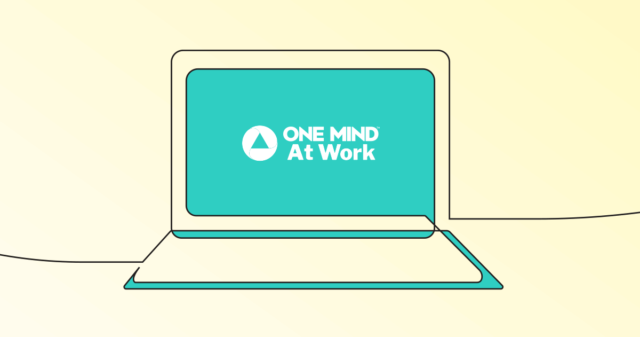May is Mental Health Awareness Month in the United States, an initiative aimed at de-stigmatizing mental illness and an opportunity to strengthen mental health support across every organization. But raising awareness is just the beginning — action is critical. While it can be difficult to know where to start with this complex topic, a number of steps offer an on-ramp to strengthen support for employee mental health and wellbeing.
Organizations, senior executives, and HR leaders can’t afford to delay taking action, given the growing needs of the workforce. Nearly one-fifth of U.S. workers (19%) rate their mental health as fair or poor, and many are still recovering from the mental health impacts of the pandemic. The WHO found that Covid-19 led to a 25% increase in the prevalence of anxiety and depression worldwide.
The resulting absenteeism, presenteeism, and lost productivity are immensely costly for employers and the wider economy. A Gallup survey estimates that workers with poor or fair mental health have nearly 12 days of unplanned absences per year. When spread across the workforce, this is projected to cost the US economy $47.6 billion annually in lost productivity.
Employers can play a central role in addressing those impacts, and many are already taking action. In a recent APA survey, the vast majority of employees (87%) said that employer actions would help their mental health. And in a McKinsey survey, the majority of employers planned to invest in mental health resources by starting, continuing, or expanding benefits in 2021.
This naturally raises the question: how can organizations invest in meaningful and sustainable efforts that support their employees and, in doing so, support their businesses?
One Mind at Work developed this checklist of ideas for leaders to implement this Mental Health Awareness Month. These six actions are most effective when taken together, but any of them can be implemented individually to begin or continue the journey:
Combat Stigma from the Top Down
When leaders share their own stories of struggling with mental health and getting help, it reduces stigma and encourages employees to access mental health resources. More personal forums like “fireside chats” can help to establish the right tone, while also building a more open and inclusive culture.
Create Healthy Work-Life Balance
Encourage boundary setting between work and personal time by limiting communication outside of business hours and “unplugging” after work. Creating a healthy work-life balance can improve employee sentiment, reduce turnover, and attract top talent for the long-term.
Revamp Your Office or Workspace
Create comfortable, customizable, and accommodating areas in the workplace, designed to support diverse preferences. Natural light, plants, comfortable seating, and healthy snacks can reduce stress, support focus, foster collaboration, and ultimately improve wellbeing.
Host Social Activities
Organizing social activities and team-building can enhance workplace culture, foster connections, and help employees feel supported. Whether in-person or remote, companies should ensure that such activities are planned during work hours to promote participation and avoid disrupting work-life balance for any employees.
Implement White Space Time / No Meeting Period
Designate and commit to daily “white space time” — a period during the day that is free of meetings. This helps to prevent burnout, while supporting more purposeful work time like strategic planning, creative problem-solving, catching up on administrative or functional tasks, or engaging in training opportunities.
Review and Improve Mental Health Policies
Conduct a regular review of all policies that touch mental health, including time-off and leave policies, accommodations for those with mental health conditions, and health coverage. Third-party experts can evaluate effectiveness, identify areas for improvement, and suggest changes. When implemented, these changes can also be communicated in a clear, accessible way.
In short, there’s no “wrong door” for employer action on mental health — what matters is getting started and continually improving. Mental Health Awareness Month is the ideal time for employers and employees alike to come together for this critically important cause, and to chart a path together that will extend beyond May to create lasting impact.







